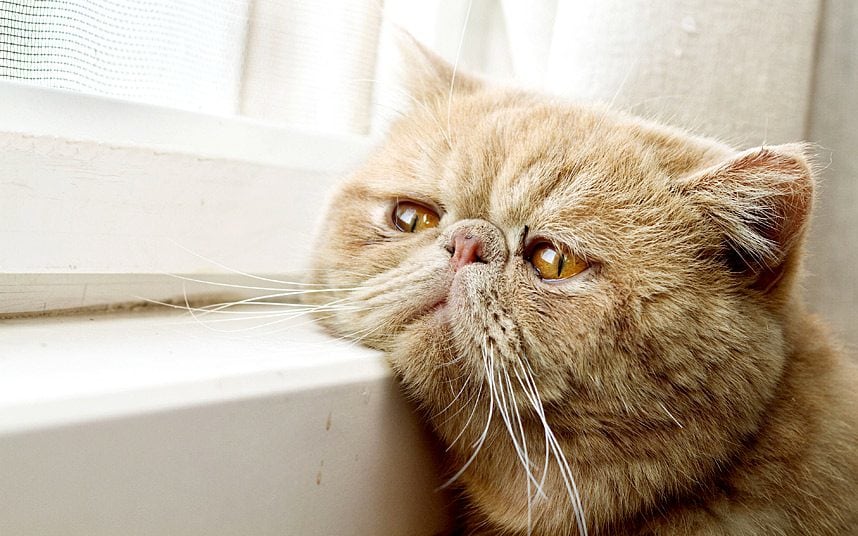Pain it isn’t always obvious to others when you’re experiencing it. Unless it’s a broken leg twisted at a 90-degree angle or a big bruise on your arm, pain is a condition with no obvious external manifestations. Sure, some people are good at going around making sure everyone knows they’ve stubbed a toe or pulled a groin muscle, but other people are more like cats—you’d never know anything was wrong.
Cats are renowned for their ability to mask pain and discomfort. This is a great advantage when out in the wild around a predator, but it’s a big problem in a home when pet owners are unaware that their pet has a problem.
Cat Pain: What We Know
Veterinarians have come a long way in understanding pain in pets. With that understanding comes the knowledge that we are very likely undertreating pets for pain they are commonly experiencing. Arthritis, dental disease, urinary tract disease, bone disease, and cancer are just a few of the common feline medical conditions that are known to be painful. Pain management specialists have a mantra they often repeat: “Assume pain.” If you diagnose a painful medical condition, pain management should be part of the treatment, every time.
Cats may not speak, but they do communicate their pain in their own ways. Although they can’t come up to us and say, “I’m hurting,” cats do exhibit behavioral changes that can indicate they are experiencing pain. The American Animal Hospital Association has pain management guidelines that can help owners and veterinarians manage feline pain.
Recognize the Signs of Cat Pain
Here are some of the most common behavioral signs that might be a symptom of a cat in pain:
Change in Activity Level
A change in activity level can indicate discomfort. Cats might become less active and sleep more hours than they used to. Stiff, arthritic cats may be reluctant to change positions, or no longer jump onto high surfaces. Conversely, cats may become more active: restless, repetitively getting up and down, and seeming to have difficulty getting comfortable.
Self Mutilation
While many people associate biting and licking with allergies, pets in pain often repetitively lick and bite at painful areas. They may do it so often that they cause secondary trauma to their body in the form of skin infections and hair loss.
Vocalizing
Most of us know that a hissing or growling cat is an unhappy cat, but did you know meows and purrs can accompany pain as well? Some cats purr when they are frightened or hurting, and it does not always indicate contentment. This is particularly true for cats with an easygoing or gentle personality.
Change in Daily Routine
A cat whose appetite suddenly drops may be feeling too much pain to eat, or may be experiencing nausea from a disease process. Cats who have an abrupt onset of soiling in the house after years of using the litterbox may be too painful to get in and out of a box with high sides, or too sore to get to where the box is located. A lap cat who suddenly can’t stand being held may be experiencing pain when they are touched or pet. Any of these changes in their usual personality and preferences may be medical in origin.
Posture
Cats do a version of the “little old person shuffle” when they are stiff; they walk very gingerly and avoid the usual athletic leaps we are accustomed to seeing. Cats with abdominal pain may have a hunched back, tucking in their abdomen in a protective posture. You may also notice a cat being protective of a certain area of their body, not wanting to be touched or scratched; they may also limp or hesitate to put weight on a sore limb.
Facial Expressions
Granted, facial expression can be difficult to gauge in a cat, but certain giveaways can indicate pain or discomfort. A vacant stare at nothing in particular, or a “glazed” expression is common. Cats in distress can also have dilated pupils—part of the stress response in the body. Unlike in dogs, cats do not normally pant. If you notice a panting cat, particularly when she is at rest, you should get her evaluated as soon as possible.
Aggression
Some cats are naturally surly for their entire lives. It can be hard to tell if they are escalating their level of aggression. However, a normally friendly cat who is suddenly hissing, swatting, and biting may be a cat in pain. Out-of-character meanness is a cat’s way of asking to be left alone.
Poor Coat Condition
Cats are expert groomers, spending up to five hours a day on maintaining their silky coats. However, pain from arthritis can make it difficult to contort themselves into their normal grooming positions, and pain in general can make a cat too uncomfortable or worn out to maintain their normal routine. A cat who stops grooming and starts to look unkempt may be in pain and needs to be evaluated.
Controlling Pain in Cats
Historically, we have had very limited options for pain control in cats, but fortunately this is changing. Owners must never treat their cat with pain medications meant for people, as they metabolize medication differently and can die from something as benign to humans as Tylenol. If you think your cat might be in pain, get her evaluated by your vet to discuss the best treatment options.
